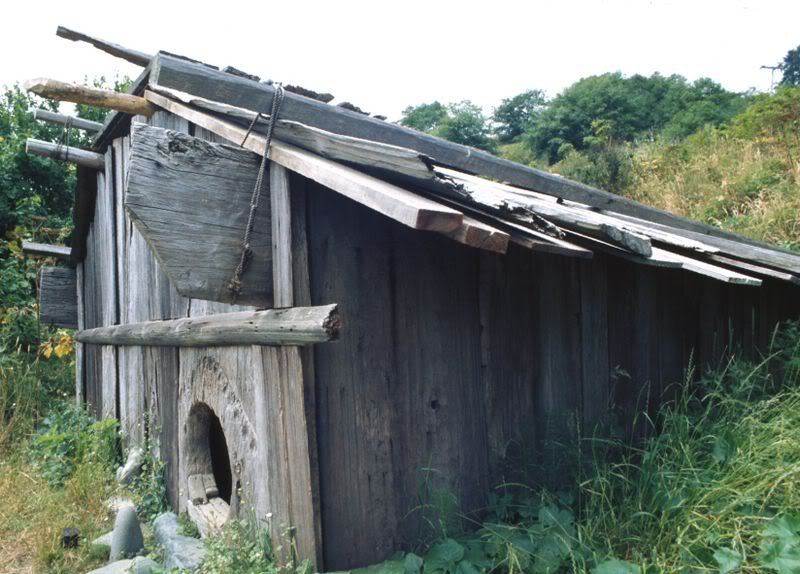( – promoted by navajo)
As with American Indians in other areas, the Northern California Indians traditionally viewed human beings, plants, animals, and objects as living things-“people”-who were basically equals. The relationship between human beings and animals, for example, was not one of exploitation but of reciprocity. Human beings respected the animal people and performed certain rites for them while the animals provided human beings with food and skins.
The non-human people-the trees, the rocks, the animals, the mountains, the springs, and others-are not only alive, but they have certain special powers and these powers can be shared with human beings when humans form a spiritual friendship and alliance with these other people. Traditionally, it was (and often, still is) the job of each individual to seek out and establish relations with the spiritual forces that were to become his or her special ally.
Among the Indian people of Northern California, dreams are the key to the spiritual world. It is in dreams that people meet the supernaturals and the spirits of birds and animals who can give them special gifts of knowledge and power. In some instances young people would go through special training and then seek a vision with the sponsorship of an elder. In other instances, the vision would simply come to people while swimming in a lake, river, or ocean.
The things that happen in dreams are just as important as those things which happen when one is awake. From the perspective of the California Indians, dreaming does not take place entirely in the mind, but is a type of communication, a way of gaining knowledge. Dreams are often more important than the events that happen when one is awake: dreams are the direct contact with the spirit world.
With regard to the ceremonies of the Northern California Indian nations, one of the most important was the World Renewal or Big Time. Among the Indians of Northern California – Karuk, Yurok, Hupa, Tolowa, Wiyot – this ceremony involved a series of complex dances, speeches, and displays of high status items. The purpose of this ceremony was to renew the world and to assure stability between the annual ceremonies. The death and rebirth of the world can be seen in the ceremonial rebuilding of ceremonial structures such as the sweathouse, ceremonial house, and dance areas.
Among the Yurok, the World Renewal ceremony was traditionally carried out each spring and each fall. The ceremonies were held at specific historic spots along the Klamath River. As a part of the ceremony, the Wogé Spirits (the pre-human inhabitants of the earth) were given tobacco and angelica root which were thrown into the fire as offerings. The World Renewal rites were held to insure bountiful crops, abundant salmon and deer, and to prevent disasters such as earthquakes, falling stars, illness, floods, and the end of the world.
Among the Yurok, the Hupa, and the Karuk the White Deerskin Dance was an occasion for displaying antique obsidian blades and albino deerskins. During this dance albino or oddly colored deerskins were held aloft on wooden poles. Among the Hupa, the carefully prepared and decorated deerskins used in the ten-day ceremony are considered to be tribal rather than personal property.
The Karok would traditionally hold their Jumping Dance at the place where the salmon had been created. The dance is held to prevent sickness, to bring happiness, and to bring good weather. According to one elder:
“When man and the world become unbalanced, then we must dance the great dances, rhythmically stamping upon the earth, exchanging with it and balancing all that brings health, strength, food, honor, good luck, and happiness for all.”
For the Jumping Dance, the dancers wear elaborate outfits, including headdresses with woodpecker scalps attached to the forehead band and topped with a feathered plume. Among the Yurok the participants would wear a headdress containing about 70 redheaded woodpecker scalps. In addition to the headdress, the dancers also wear dentalia shell necklaces and a deerskin skirt and they carry a Jump Dance basket in the right hand.
The Brush Dance was an important curing ceremony and was given for curing a sick child. During this ceremony, the roof planks were removed from the house during the dance so that people could watch from the outside (houses were dug down into the ground). The Brush Dance is also an occasion for community entertainment and courtship.
An important element in the curing is the waving of sticks of burning sugar pine pitchwood over the baby while singing. This helps the baby grow stronger.

Leave a Reply